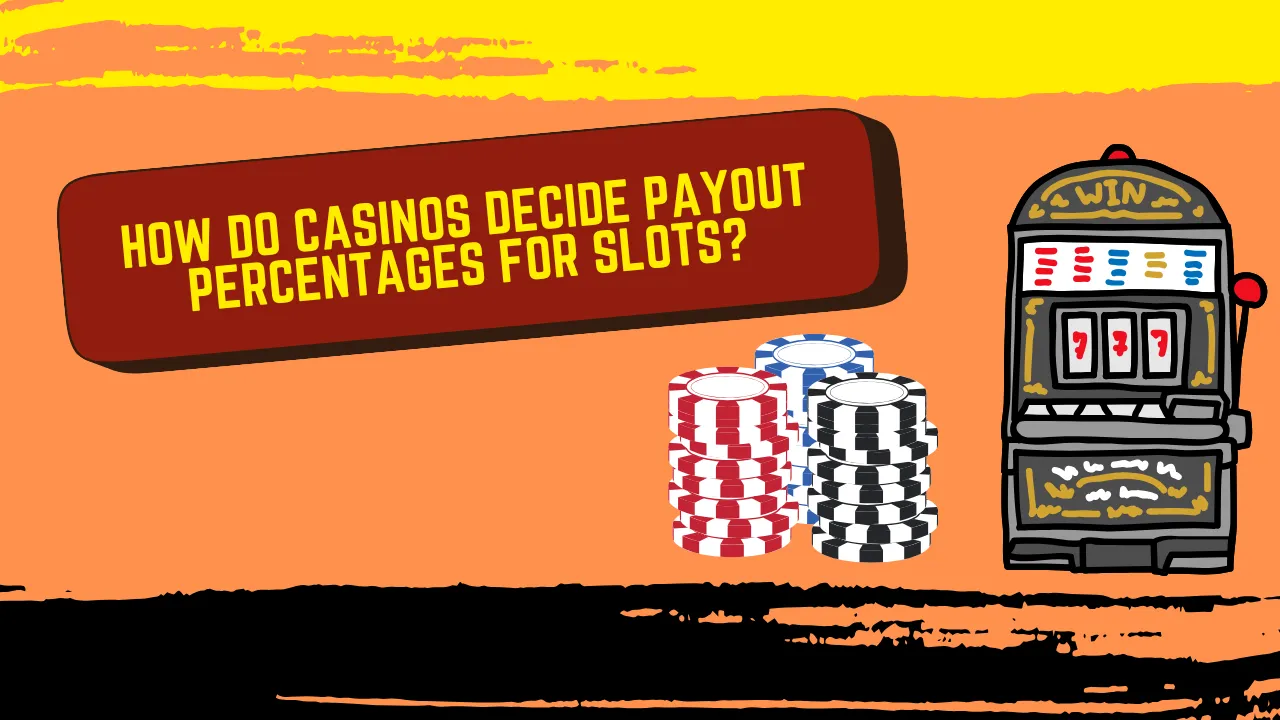Slot machines are the beating heart of most casinos, both online and offline. They attract crowds with their flashing lights, immersive themes, and the promise of life-changing jackpots. Yet one of the most common questions players ask is: how do casinos decide the payout percentages for slots?
It’s a fair concern. After all, when you’re spinning the reels, you want to know whether the game is giving you a fair shot at winning. Casinos aren’t in the business of giving money away, but they also need to keep players happy enough to come back. Striking this balance is where payout percentages — sometimes called Return to Player (RTP) rates — come in.
In this article, I’ll break down exactly how casinos set these percentages, why they vary from game to game, and what this means for players who want to make informed choices at the slots.
The Concept of Return to Player (RTP)
At the core of payout percentages lies RTP, or Return to Player. This is the theoretical percentage of all wagered money that a slot machine is expected to pay back to players over the long term. For example, a slot with a 96% RTP means that, theoretically, for every £100 bet, the machine will return £96 in winnings while keeping £4 as profit for the house.
Casinos don’t typically calculate RTP themselves. Instead, slot machines come with pre-programmed mathematical models created by the game developers. Regulatory bodies then test and verify these figures before the machines or games can go live in casinos.
Understanding RTP is useful for players, but it’s equally important to remember that these numbers work over millions of spins, not a handful of sessions. You might walk away with a jackpot or lose your stake in minutes — both are perfectly normal outcomes within the bounds of probability.
How Casinos Select Slot Payout Percentages
So if game developers design the RTP, how do casinos influence payouts? Their role lies in choosing which slot configurations to offer. Many slot titles come with different RTP settings, giving casinos some flexibility.
For example, a game might be available with RTP options of 94%, 96%, or 97%. One casino might pick the middle ground to balance profit and player satisfaction, while another might opt for the higher RTP to attract a loyal base of seasoned players.
This decision often depends on the casino’s business strategy, the competition in their market, and the preferences of their customer base. Online casinos, in particular, operate in highly competitive spaces where offering player-friendly payouts can be a major advantage. That’s also why players comparing different platforms, such as those searching for best poker sites uk, often pay close attention to RTPs and payout fairness across games.
Variance and Volatility: More Than Just RTP
RTP isn’t the only factor that shapes how slots pay out. Variance (or volatility) plays a big role in player experience. Low-variance slots pay out smaller amounts more frequently, while high-variance slots deliver larger prizes but less often.
Casinos choose a mix of both to cater to different types of players. Some gamblers prefer a steady stream of small wins to extend their playtime, while others are thrill-seekers chasing that rare but massive payout. The volatility setting is hardwired into the game design, so casinos focus on offering a portfolio that appeals to all preferences.
Regulatory Oversight and Testing
Another crucial aspect is regulation. Licensed casinos — particularly in the UK, EU, and North America — must adhere to strict guidelines set by gaming authorities. These regulators test slot machines to confirm that the RNG (Random Number Generator) is functioning properly and that the stated RTP is accurate.
For example, the UK Gambling Commission requires developers and operators to submit their games to independent labs for testing. This ensures players aren’t being misled and that the outcomes are genuinely random. Casinos that fail to comply risk losing their licenses, which is why reputable venues take compliance very seriously.
Why Payout Percentages Differ Between Online and Land-Based Casinos
One thing players quickly notice is that online slots usually offer higher RTPs than their land-based counterparts. It’s not unusual to see online games with 96–98% RTP, whereas many physical slot machines hover closer to 88–94%.
The reason comes down to overhead. Brick-and-mortar casinos have significant running costs — staff, security, property maintenance, and more. Online platforms, by contrast, can operate with leaner expenses, allowing them to pass some of those savings on to players through better payout percentages.
This is one of the reasons online gaming has grown so popular. Players know their money stretches further when they play online slots compared to the machines on a casino floor in Las Vegas or London.
The Casino’s Balancing Act
Casinos face a constant balancing act when setting slot payout percentages. If RTPs are too low, players may feel cheated and stop coming back. If they’re too high, the casino risks cutting into its profits.
The sweet spot is usually around the industry average of 95–97% for online slots. At this level, casinos can remain profitable while players feel they’re getting fair entertainment value. Promotional offers, free spins, and loyalty bonuses are then layered on top to keep the experience engaging.
Player Perception and Psychology
Interestingly, payout percentages don’t tell the whole story of player satisfaction. Many gamblers don’t actively check RTPs before playing. Instead, their perception of fairness often comes from personal experiences.
A slot that delivers frequent small wins may feel more “fair” to a player even if its RTP is lower than another game that pays rarely but in larger amounts. Game themes, graphics, sound effects, and bonus features also contribute heavily to player enjoyment, sometimes more so than the mathematical underpinnings. Casinos are well aware of this and carefully curate their slot libraries with psychology in mind.
The Future of Slot Payouts
As technology evolves, we’re seeing new trends emerge in how casinos approach payouts. Some developers are experimenting with “personalized RTPs” or adaptive algorithms that respond to a player’s session. While still controversial and heavily scrutinized, these innovations suggest a future where payout structures may become even more tailored.
Additionally, the growth of blockchain-based casinos promises greater transparency. Smart contracts and provably fair algorithms could allow players to verify payouts directly on the blockchain, removing the need to simply trust casino operators or regulators.
Whatever direction the industry takes, one thing remains clear: payout percentages will always be central to how casinos manage both their business interests and their relationships with players.
Conclusion
Casinos don’t leave slot payout percentages to chance. They’re carefully chosen based on game developer settings, business strategy, regulation, and player psychology. RTP is just one piece of the puzzle, with variance, competition, and overhead costs also shaping the numbers players see.
For players, understanding how these decisions are made can help set realistic expectations and guide smarter choices when exploring slots. Whether you’re spinning reels online or on a buzzing casino floor, knowing the mechanics behind payouts adds another layer of insight to the game.




